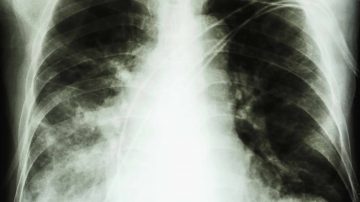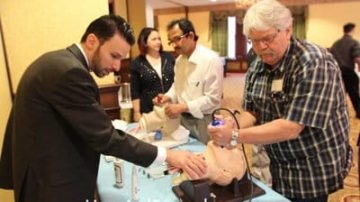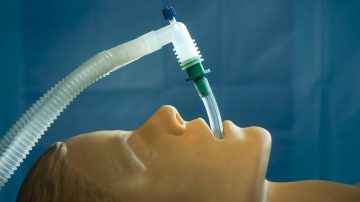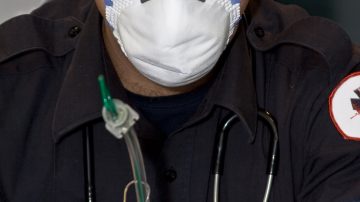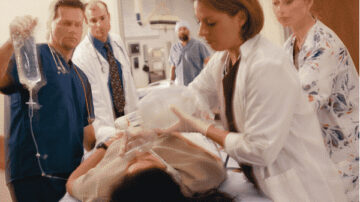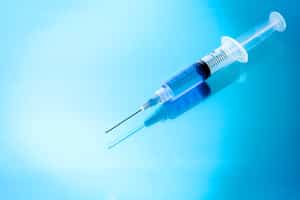Researchers evaluated 17,239 patients (77% older than 60; 31% tobacco users) with COPD exacerbations who were admitted to ICUs at 473 U.S. hospitals. Nearly one third of patients received noninvasive ventilation; 15% were intubated. Almost all patients received antibiotics and…
Read MoreLung ultrasound can detect pneumothorax and pulmonary edema, but limited data exist to quantify its accuracy for diagnosing pneumonia. In a prospective study, investigators compared lung ultrasound to chest computed tomography (CT) and chest x-ray among adult patients presenting with…
Read MoreUse of video laryngoscopy (VL) results in improved glottic views, fewer intubation attempts, and higher intubation success in both operating room and emergency department (ED) patients. Less is known about performance characteristics of VL during urgent inpatient intubations performed in…
Read MoreMost patients with pulmonary embolism (PE) do well, and outpatient management is becoming more common. Predicting which patients will have complications would be valuable in order to triage patients for discharge or admission to a ward or intensive care unit…
Read MoreBased on meta-analysis of randomized, controlled trials, noninvasive positive pressure ventilation (NPPV) is the only intervention that improves mortality in patients hospitalized for exacerbations of chronic obstructive pulmonary disease (COPD). However, many patients who are eligible for this intervention go…
Read MoreProne positioning has been in existence since 1974; however, the equipment and technique has now been refined and has proven to decrease mortality in severe ARDS. Prone positioning decreases the amount of alveolar collapse and decreases V/Q mismatching in patients…
Read MoreCHOOSING WISELY RECOMMENDATIONS FROM THE CRITICAL CARE SOCIETIES COLLABORATIVE 1. Don’t order diagnostic tests at regular intervals (such as every day), but rather in response to specific clinical questions. Many diagnostic studies (including chest radiographs, arterial blood gases, blood chemistries…
Read MoreEEG in the Evaluation of Patients with Coma and Other Disorders of Consciousness The clinical evaluation of disorders of consciousness involves the challenge of distinguishing coma from vegetative state (VS) and from minimally conscious state (MCS). Recent neuroimaging studies have…
Read MoreMore Articles – Emergency Procedures, Glidescope Intubation, medical procedures, Respiratory diseases
Preface: This retrospective study examined physician performed prehospital intubations between 2008 and 2012 in Scottish aeromedical transport system. Over 200 intubations were analyzed and 75% of the intubations were during inter facility transport and 25% at the scene. There was…
Read MoreCardiac arrest patients who were intubated had similar outcomes to those who had a supraglottic airway device (e.g., King tube) inserted in the pre-hospital setting. A literature review of 5 studies and over 300,000 patients with pre-hospital cardiac arrest demonstrated…
Read MoreAmong the 53% of patients with negative bronchoalveolar lavage results, alternative explanations for fever and for pulmonary infiltrates were established in 61% and 46%, respectively. Chest x-ray abnormalities, leukocytosis, purulent tracheal aspirate, or fever in a mechanically ventilated patient raise…
Read MoreA new randomized controlled trial out of the UK that investigated 540 patients with ARDS from sepsis showed no benefit of statins. The study investigated the use of Simvastatin 80 mg/day vs placebo in patients with ARDS from sepsis and…
Read MoreGuidelines recommend that patients with massive pulmonary embolism (PE) and hemodynamic instability be treated with thrombolysis (Circulation 2011; 123:1788). However, consensus is lacking on what to do in intermediate-risk patients (i.e., those who are hemodynamically stable but have right ventricular…
Read MoreNeedle decompression location Traditionally, needle decompression for the emergent treatment of a tension pneumothorax is the second intercostal space in the mid-clavicular line. This remains an option for needle insertion when you are treating a tension pneumothorax. This insertion point…
Read MoreThere has always been some controversy about the utility of applying cricoid pressure (aka Sellick Maneuver) during rapid sequence intubation for the purpose of preventing aspiration. Theoretically, applying pressure on the cricoid cartilage posteriorly should occlude the esophagus against the…
Read MoreCategories
- ACLS (1)
- Arterial line (33)
- Cardiovascular diseases (77)
- Central line (55)
- Chest Tube (39)
- Dermatology (4)
- Emergency Procedures (138)
- Endocrinology (6)
- Endotracheal Intubation (36)
- Events (24)
- FAST Exam (12)
- Featured (112)
- Featured Procedure (42)
- Gastrointestinal diseases (32)
- Ginecology (3)
- Glidescope Intubation (21)
- Hematology (33)
- Hospital Procedures (85)
- Infections (32)
- Intraosseous line (8)
- King Tube (27)
- Laryngeal Mask Airway (18)
- Lumbar Puncture (36)
- Mechanical Ventilation (34)
- Medical General (95)
- medical procedures (258)
- Needle Decompression (6)
- Nephrology (11)
- Neurological diseases (12)
- Oncology (4)
- Paracentesis (32)
- Pericardiocentesis (3)
- Procedural Sedation (19)
- Respiratory diseases (85)
- RUSH Exam (8)
- Thoracentesis (37)
- Traumatology (24)
- Travel (27)
- Ultrasound-Guided Peripheral IV (13)


